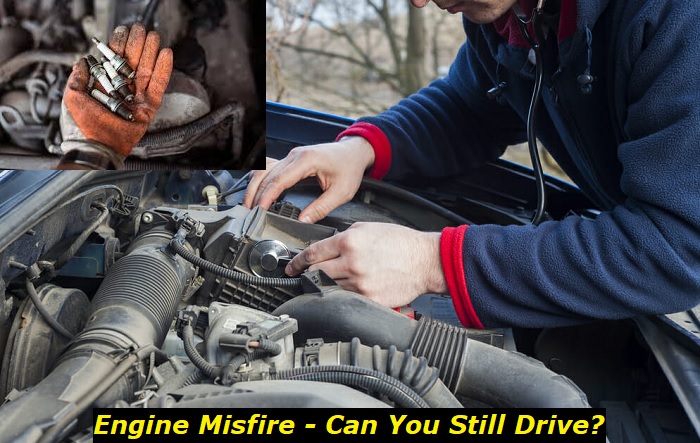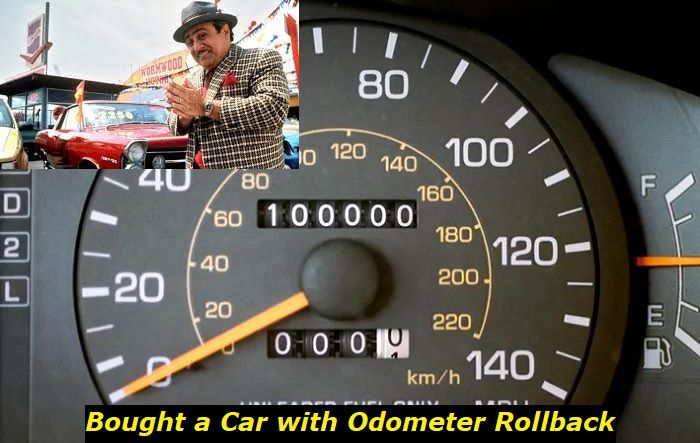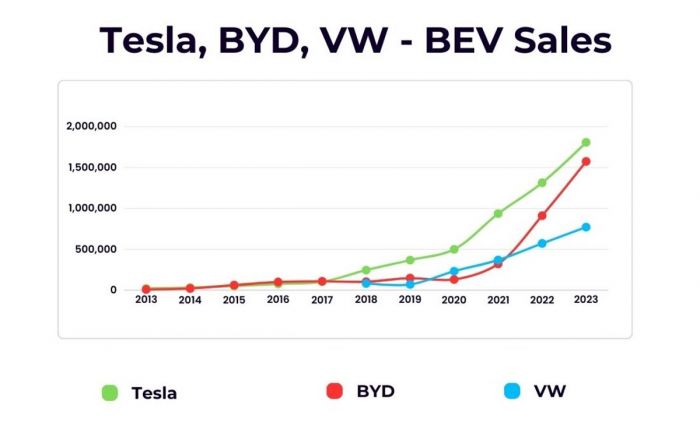An engine misfire is a situation when one or more of the cylinders in the engine fails to produce the expected power ratio that drives the engine. It happens when the engine skips a part of its internal combustion cycle process. This unexpected change in performance may cause the vehicle to lose power leading to a stumble, or in serious situations, a complete stall.
Engine misfire highlights
- Level of importance:Medium
- Commonreasons:No spark, electrical problems, no fuel, low fuel pressure, injection issues, compression problems, internal engine damage
- DIY inspection:Possible but very complicated
- DIY repair:Impossible, in most cases
- Price for repair:$500 - $1,600
- Can you drive?Usually, yes
- Ways to fix:Locate the issue and let a professional mechanic fix it for you

Why the misfire?
The car ignition system is responsible for firing up the air-fuel mixture in the engine. The components involved in the firing process include the spark plugs, coils, fuel injectors, and ignition timings which must work in unison to produce the desired power. When any of these fail, the cylinders stop producing power leading to sudden engine idling, which is referred to as a misfire.
1) Imbalanced Air-Fuel mixture
As stated above, an imbalance in the air-fuel mixture causes an engine to misfire. The imbalance can be a result of the following factors or processes. If the air-fuel mixture in any of the cylinders becomes imbalanced the firing process is interrupted. This is because the air-to-fuel ratio in the cylinder must be per the engine's requirement.
As such, the mixture fails to ignite, meaning at that particular compression cycle, there will be no power leaving the cylinder. The lack of a power cycle will mean less overall power for the engine, hence the stall or misfire.
The air-fuel mixture imbalance is brought by a malfunctioning fuel ejector or fuel pressure that is too low. The injector may have issues such as clogging, sticky EGR valve, or air leaks that prevent the normal ejection of fuel into the cylinder. This essentially reduces the amount of power emitted from the cylinder (or cylinders if several are affected), leading to a misfire.
2) Low Compression
If the air-fuel mixture escapes from the cylinder without ignition, compression is lost and that particular cylinder releases no power to the drive. The ignition of the air-fuel mixture in the cylinder builds up firepower compression that drives the cylinder up or down to release power. A low or no compression means the engine misfires and loses power momentarily (or continuously if the fault is repeated at every compression cycle).
Lost compression is caused by a leakage in the exhaust valve or if the cylinder head gasket has been blown. Such faults cause the air to escape before it is ignited in the cylinder.
3) Lost Engine spark
Some faults may prevent the electric spark from flowing through the spark plug gap. This can be a result of corroded ends, worn-out spark plugs, weak ignition coils, or damage in any of the electric circuit parts that supply ignition currents through the spark plug. A lack of an electric engine spark means the air-fuel mixture is not ignited which means the mixture leaves the cylinder without providing the expected firepower.
4) Mechanical Problems
There may be times when the engine misfires randomly without any consistency or pattern. This may happen when the vehicle is carrying a heavy load or when the engine is cold. Though it may be difficult to understand the actual cause of such misfires, it is an indicator of an underlying mechanical issue with the engine, more so concerning the valves, timing belts, or the intake manifold gaskets. Such problems require a thorough diagnosis of the vehicle to detect and rectify the problem.
Other mechanical issues that can cause a misfire include cracks in the combustion chambers, worn-out gaskets, or damaged valve trains.
Manifestation of Misfire
An engine misfire manifests itself when your car suddenly loses power and is slow to react when you step on the acceleration pedal, it shows a form of stuttering, a shaking steering wheel, or abnormal vibrations on idling. Apart from these sudden and obvious symptoms, you might also notice a significant drop in your car's fuel economy, excessive exhaust smoke, or an increase in harmful emissions.
Sometimes, the car might come to a complete stall especially if all the cylinders misfire. If two cylinders in a four-cylinder engine misfire, it means the engine loses 50% of its normal power output at that particular instance. The loss means the engine cannot provide enough power to move the vehicle, making it slow down, start vibrating or stall completely.
You can also detect a misfire through changes in the engine sound. If the engine sounds abnormal, produces hissing, or extra loud noises, it could be a clue that the engine is misfiring (though not all noises are a result of misfiring).
Alternatively, your dashboard could alert you about a misfire that requires attention. Moreover, backfiring, sneezing engine sounds, malfunctioning ignition starts, or a check engine light on the dashboard may all be an indicator of a misfiring cylinder.
Is it okay to Drive with a misfire?
A misfiring engine can be driven for as long as the driver may deem it necessary. Depending on the depth of the problem, or the number of cylinders affected, the vehicle will drive along albeit with a little bit less power, stalling, or shaking/vibrations along the way. That said, it is not advisable to drive with a misfiring engine.
The most immediate threat to you while driving with a misfiring engine is a compromise on your safety. A misfiring engine may lack the power to accelerate while overtaking, may stall in the middle of the highway, or the vibrations may jeopardize your vehicle control.
Engine Damage
Misfires are likely to significantly damage your engine if allowed to hang longer than necessary. A simple misfire is not necessarily an engine problem and may be a result of a faulty coil, plug, or ignition current. However, when it lingers a little longer than necessary, it will lead to other more serious engine problems.
One of the most immediate effects is the destruction of the catalytic converter.
The catalytic converter filters all harmful by-products emitted by internal combustion and burn them up. Apart from this main function, the gadget improves your car's efficiency, thus improving fuel economy. Once destroyed by a misfire, it means your engine output is reduced
The reason why a misfire should be treated immediately is to ensure the problem does not extend to other areas. Normally, misfires emanating from electrical faults are less harmful than those coming from mechanical issues. The latter would mean the engine is already at risk of failure aggravated by the misfire.
The immediate problem of driving on a misfiring cylinder is the probability of causing a strain on the other cylinders. Usually, the other cylinders will overwork to compensate for the lost power from the misfiring cylinder. The strain may cascade to the other cylinders causing a complete stall.
The un-burnt fuel in the cylinder damages the piston rings or the spark plug ends over time. This happens when the excess fuel cleans the oil lubrication from the pistons and cylinder walls, greatly increasing the tear and wear cycle of the piston rings. Damaged piston rings will lead to oil leaks into the combustion chambers, thus increasing oil consumption and reducing engine power output.
Elsewhere, the saturation of the combustion chamber by un-burnt fuel makes the engine run lean. Apart from lubrication, oil also acts as an engine coolant in the chamber. When it is cleaned by the excess un-burnt fuel, it means the engine will have excess heat when driving on a misfire. The pistons, valves, and cylinder heads will warp or crack due to this heat.
While modern cars move into limp mode upon detecting a misfire, it is advisable to fix an engine misfire immediately to limit the risks of serious engine damage that may arise from driving your car for long on an engine misfire. Have an experienced mechanic inspect your engine to rectify the misfire to avoid getting into a more expensive engine repair later.
Thus, it is not advisable to drive your car with a misfiring engine. Fix the problem first.
About the authors
The CarAraC research team is composed of seasoned auto mechanics and automotive industry professionals, including individuals with advanced degrees and certifications in their field. Our team members boast prestigious credentials, reflecting their extensive knowledge and skills. These qualifications include: IMI: Institute of the Motor Industry, ASE-Certified Master Automobile Technicians; Coventry University, Graduate of MA in Automotive Journalism; Politecnico di Torino, Italy, MS Automotive Engineering; Ss. Cyril and Methodius University in Skopje, Mechanical University in Skopje; TOC Automotive College; DHA Suffa University, Department of Mechanical Engineering






Add comment